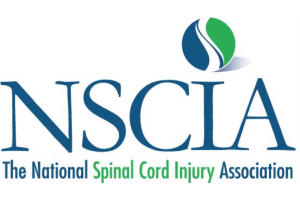Negligence Per Se
Violations of the Georgia Uniform Rules of the Road
and Negligence Per Se Under Georgia Law
Studies have shown that most automobile accidents are caused in whole or in part by driving errors or misjudgments. Thus, driver negligence – rather than weather, mechanical problems or road conditions – is usually the culprit of any motor vehicle accident. In particular, most automobile collisions are caused by a driver’s failure to obey the “Uniform Rules of the Road.” These are statutory rules which all drivers of cars, trucks and motorcycles must follow while operating a motor vehicle on the roads and highways in Georgia. They can be found at O.C.G.A. § 40-6-1 through 40-6-397. These Georgia “Uniform Rules of the Road” govern many areas of safety such as:
- obeying the instructions of a mechanical traffic control device (O.C.G.A. § 40-6-20 through 40-6-26);
- passing or overtaking other vehicles (O.C.G.A. § 40-6-40 through 40-6-46);
- following too closely (O.C.G.A. § 40-6-49);
- making proper right or left hand turns within intersections (O.C.G.A. § 40-6-70 through 40-6-71; 40-6-120 through 40-6-126);
- obeying stop signs and yield signs (O.C.G.A. § 40-6-72);
- obeying posted speed limits and driving at appropriate rates of speed (O.C.G.A. § 40-6-180 through 40-6-188); and
- driving while intoxicated (O.C.G.A. § 40-6-391 through 40-6-392).
Understanding the Georgia Doctrine of Negligence Per Se
Under Georgia law, a driver’s violation of a “Uniform Rule of the Road” can be considered “negligence per se.” The term “negligence per se” means negligence as a matter of law. Under the legal doctrine of negligence per se, a defendant’s unexcused violation of a safety related statute is deemed to constitute negligence as a matter of law. Georgia appellate courts have consistently held that the Uniform Rules of the Road are safety statutes which will support the assertion of negligence per se against a driver shown to have violated one of these rules. Disobeying or violating the Uniform Rules of the Road is considered negligence per se because these statutes effectively establish the standards of reasonable care as it relates to the operation of motor vehicles. By failing to obey or follow a Uniform Rule of the Road, the driver is considered to have acted in an unreasonable manner and thus, negligently as a matter of law.
Establishing Liability in a Georgia Car Accident Through Negligence Per Se
To establish negligence per se, the plaintiff has the burden of proving that the defendant driver violated one or more Uniform Rules of the Road. He is allowed to do that regardless of whether the defendant received a citation from the police or not. However, merely proving a violation of a Uniform Rule of the Road and establishing negligence per se is not alone sufficient to support liability against the other driver. Negligence per se does not mean liability per se. Negligence per se does not conclusively establish the defendant’s civil liability for the plaintiff’s damages. Even where a driver is shown to have violated a Uniform Rule of the Road, the plaintiff must still prove that such deviation proximately caused the accident. In Georgia, negligence per se gives rise only to a rebuttable presumption of negligence. The defendant is still allowed to present evidence that he was not negligent or that his violation of the rule was excusable.
Obtain Legal Representation from An Atlanta Car Accident Lawyer
If you or a member of your family has been involved in an automobile or motorcycle accident, we encourage you to contact us to discuss your case. We have considerable experience handling personal injury and wrongful death lawsuits on behalf of car accident victims throughout all parts of Georgia.









